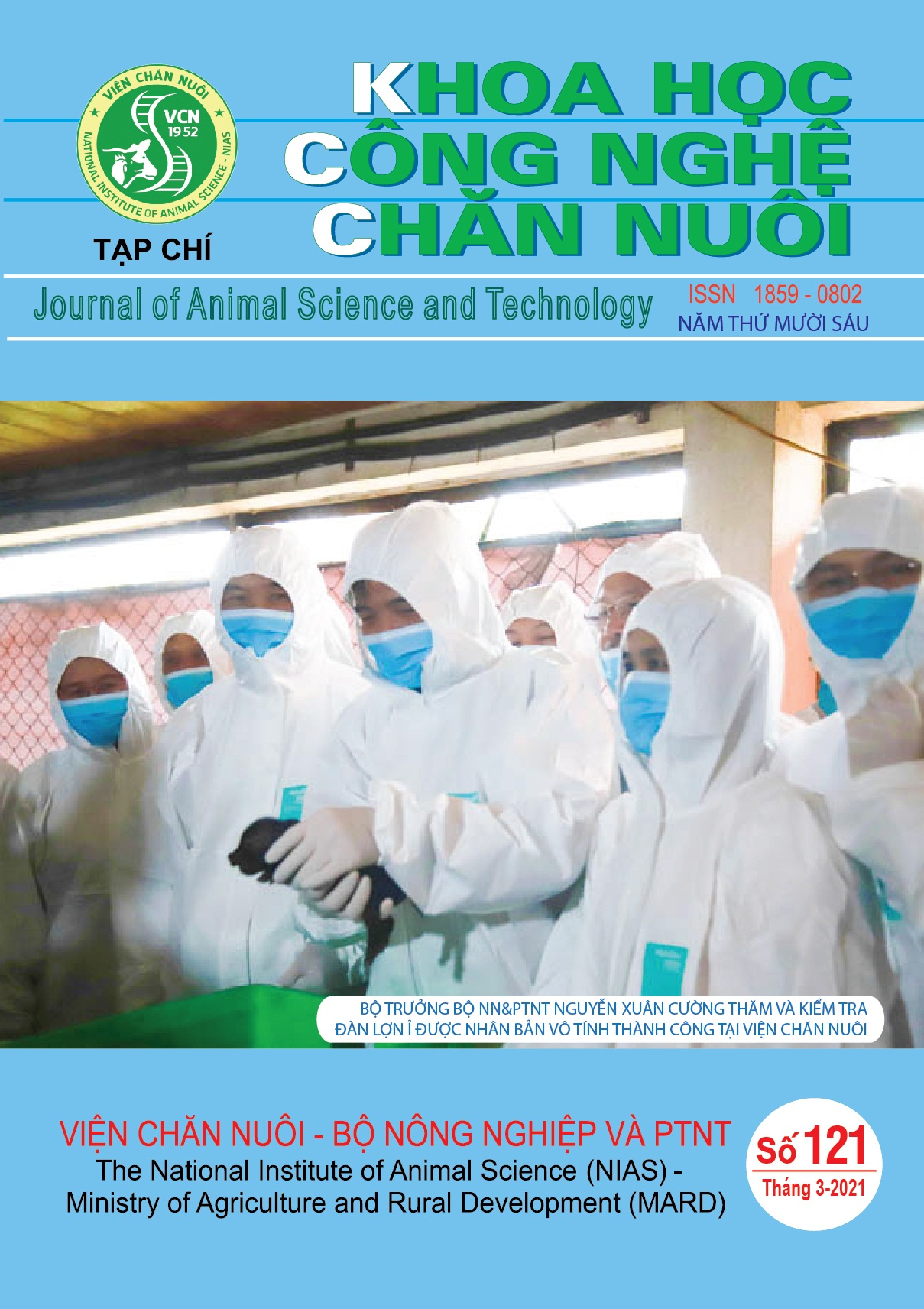Determination of the approximate protein level in food for “Sen” muscovy duck of reproduction
The experiment was conducted on 1,350 “Sen” muscovy ducks for breeding and was conducted at Dai Xuyen Duck Breeding and Research Center. Starting from 1 day of age, experimental muscovy ducks were wearing the number of wings each, were kept completely in a cage (with barn filler) with a naturally ventilated playground. Experiments to determine the appropriate protein level in the muscovy duckling, prepare laying and laying stages with different protein levels at the duckling stages (0-4) weeks of age including: 19; 20 and 21%, ME 2900 kcal/kg; 5-8 weeks of age including: 17; 18 and 19%, ME 2900 kcal/kg; prepare laying stage (9 - 26 weeks of age) includes: 13; 14 and 15%; ME 2900 kcal/kg; laying stage (27 - 78 weeks of age): 15; 16 and 17% ME 2650 Kcal/kg, arranged in 3 experimental groups: Treatment 1 (at 19% - 17% - 13% - 15%); treatment 2 (20% - 18% - 14% - 16%); treatment 3 (21% - 19% - 15% - 17%) corresponding to the protein level arranged in the stages of duckling (0 - 4 weeks of age and 5 - 8 weeks of age) - prepare laying - laying. The results show that: Sen muscovy duck breeding in experimental group 2 had the highest results: the rate of feeding the duckling and gilts stage was 92.22%, the body weight of Sen muscovy duck at 26 weeks of age was 3124.01 gram/male and 2031.53 gram/female, egg production 89.18 eggs /female/ 52 weeks of lay, feed consumption of 6.88 kg/10 eggs, the rate of eggs with embryos was 95.67%; hatching rate/number of eggs with embryos 86.87%; The hatching rate/total eggs hatched was 82.00% and the hatching rate 1/number of ducklings hatched was 92.68%. Economic efficiency was 69,842,574 VND, interest /female 310,411 VND, mixed income index (MI), profit (Pr), mixed income / total cost and mixed income / labor. reaching the highest level in the experimental lot 2 with the corresponding indices of 107,342,574 VND; 83,382,574 VND; 0.50 and 4.47. Use of feed with protein level at 20% and 18% duckling, 14% prepare laying and 16% laying stages Sen muscovy duck breeding is most effective.

